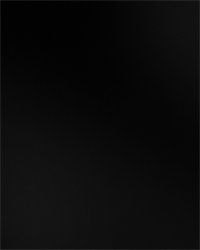Some Questions - Daniel Everett
Thanks for having me as your host this week!
In parting, I figured it was only fair that I at least try and answer my own questions.
In your experience, how has the Internet changed the way that art is discussed, displayed, curated, experienced, or distributed?
What are your opinions on the idea of the Internet as replacement for critique space? As replacement for museum or gallery? Jpeg as replacement for physical art object? Tumblr as replacement for curation?
The Internet, in a number of ways, has freed my art from the burden of existence. I feel a complicated sense of guilt in the production of physical objects – something real, but difficult to articulate - a kind of burden rooted in expectation that weighs on me until the object is finally taken away or destroyed.
The Internet alleviates this by allowing me to create something and immediately liberate it, leaving it to plot its own course – to disappear, buried in the annals of a Tumblr or to spread and change through a series of progressive recontexualizations, often shedding its original framework and any attachment to authorship. It becomes the domain of a stream of co-owners and co-re-creators and various new participants. It’s in this new immortal half-existence that most of my work now meets its potential. I can see this evolution as nothing but beneficial.
Saying this however, I recognize something crucial in my physical interaction with art. I see an inimitable experience in scale and relational context (an embracing of theatricality). I see a function to scarcity (and I don’t mean in a commodity-based, pecuniary sense, but in a “if everything is important, nothing is important” sense). Lastly, there is the inescapable reality of my own physicality. While I can trade my cds for mp3s, my dvds for divx files, my books for pdfs – I still have to buy pants, and food (and external hard drives). I still need a pillow. And ultimately, I still need to interact (at least in part, and somewhat anxiously) with objects.
There is a promise and largely unrealized potential in virtual models of art creation and distribution - I (still) believe in the utopian promises of the Internet. But it is not something meant to eclipse or replace our relationship with the physical. While I can’t wait for current art systems to fall apart and be reborn in new forms, I think that physically-based systems must learn to take cues from the Internet and incorporate the best parts of anonymity, instability of context, a blurring of the location of art between object and documentation, and freedom from profit motivations.
What are your opinions on the idea of the Internet as replacement for critique space? As replacement for museum or gallery? Jpeg as replacement for physical art object? Tumblr as replacement for curation?
The Internet, in a number of ways, has freed my art from the burden of existence. I feel a complicated sense of guilt in the production of physical objects – something real, but difficult to articulate - a kind of burden rooted in expectation that weighs on me until the object is finally taken away or destroyed.
The Internet alleviates this by allowing me to create something and immediately liberate it, leaving it to plot its own course – to disappear, buried in the annals of a Tumblr or to spread and change through a series of progressive recontexualizations, often shedding its original framework and any attachment to authorship. It becomes the domain of a stream of co-owners and co-re-creators and various new participants. It’s in this new immortal half-existence that most of my work now meets its potential. I can see this evolution as nothing but beneficial.
Saying this however, I recognize something crucial in my physical interaction with art. I see an inimitable experience in scale and relational context (an embracing of theatricality). I see a function to scarcity (and I don’t mean in a commodity-based, pecuniary sense, but in a “if everything is important, nothing is important” sense). Lastly, there is the inescapable reality of my own physicality. While I can trade my cds for mp3s, my dvds for divx files, my books for pdfs – I still have to buy pants, and food (and external hard drives). I still need a pillow. And ultimately, I still need to interact (at least in part, and somewhat anxiously) with objects.
There is a promise and largely unrealized potential in virtual models of art creation and distribution - I (still) believe in the utopian promises of the Internet. But it is not something meant to eclipse or replace our relationship with the physical. While I can’t wait for current art systems to fall apart and be reborn in new forms, I think that physically-based systems must learn to take cues from the Internet and incorporate the best parts of anonymity, instability of context, a blurring of the location of art between object and documentation, and freedom from profit motivations.





























